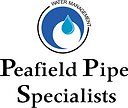Hydrostatic pressure testing is a fundamental process used to assess the strength, integrity, and safety of various pressurized systems and components. Whether in the oil and gas industry, manufacturing, construction, or any other field that involves pressure vessels or pipelines, adherence to rigorous standards and regulations is paramount. In this article, we delve into the significance of hydrostatic pressure testing and explore the standards and regulations that govern this critical practice.
Why Hydrostatic Pressure Testing Matters
Before we delve into the standards and regulations, it’s essential to understand why hydrostatic pressure testing is so important. In industries where pressure is a constant factor, such as oil and gas, chemical processing, and even in water infrastructure, failure of pressurized systems can result in catastrophic consequences. Hydrostatic pressure testing allows us to:
Assess Strength and Integrity
One of the primary objectives of hydrostatic pressure testing is to verify the strength and integrity of the materials used in a system. By subjecting it to elevated pressures, any weak points, defects, or structural issues can be identified and rectified before they become a safety hazard.
Ensure Safety
Safety is paramount in industries dealing with high-pressure systems. Pressure vessels, pipelines, and other pressurized equipment must undergo rigorous testing to ensure they can withstand the stresses they will encounter during operation. Hydrostatic testing helps identify potential weaknesses that could lead to catastrophic failures, protecting both people and the environment.
Comply with Regulations
Regulatory bodies worldwide mandate the use of hydrostatic pressure testing to ensure safety and environmental compliance. Non-compliance with these regulations can result in severe penalties, legal repercussions, and damage to a company’s reputation.
The Key Hydrostatic Pressure Testing Standards
Several organizations and standards govern hydrostatic pressure testing to ensure uniformity, reliability, and safety across industries. Some of the most prominent standards include:
1. ASME Boiler and Pressure Vessel Code
The American Society of Mechanical Engineers (ASME) Boiler and Pressure Vessel Code is a globally recognized set of codes and standards that govern the design, fabrication, inspection, and testing of pressure equipment. Section VIII of the code specifically addresses pressure vessels and includes detailed guidelines for hydrostatic testing.
2. API 510, 570, and 653
The American Petroleum Institute (API) publishes standards for the inspection, repair, alteration, and re-rating of pressure vessels, piping systems, and storage tanks. API 510 covers the inspection of pressure vessels, API 570 addresses piping systems, and API 653 focuses on above-ground storage tanks.
3. ASTM International
ASTM International, formerly known as the American Society for Testing and Materials, provides a wide range of standards for materials, including those used in pressure testing. ASTM standards outline test methods and specifications for materials used in various industries.
4. ISO 9001
ISO 9001 is an international standard for quality management systems. While it does not provide specific testing procedures, it emphasizes the importance of quality control and documentation throughout the testing process.
The Hydrostatic Pressure Testing Process
The hydrostatic pressure testing process involves several critical steps:
1. Preparation
Before testing can begin, thorough preparation is essential. This includes selecting the appropriate test fluid (often water) and ensuring the test equipment is calibrated and in proper working condition.
2. Filling and Pressurizing
The test item, whether it’s a pressure vessel, pipeline, or another component, is filled with the test fluid and pressurized to the specified test pressure. This pressure is usually higher than the expected operating pressure to provide a safety margin.
3. Holding Pressure
The test pressure is maintained for a predetermined period, typically between 10 minutes and 2 hours, depending on the standard and the type of equipment being tested. During this time, inspectors closely monitor for any pressure drop, indicating potential leaks or weaknesses.
4. Examination and Documentation
After the test is completed, a thorough examination is conducted to check for any signs of leakage, distortion, or other issues. All results are meticulously documented, including the test pressure, duration, and any observations made during the test.
Ensuring Compliance and Safety
Adherence to hydrostatic pressure testing standards and regulations is crucial for maintaining the safety and reliability of pressurized systems. Failure to comply can lead to catastrophic accidents, financial losses, and legal liabilities.
To ensure compliance and safety:
1. Training and Certification
Personnel involved in hydrostatic testing should receive proper training and certification to ensure they understand the standards, procedures, and safety protocols.
2. Regular Inspections
Periodic inspections of pressure equipment should be conducted to identify potential issues before they lead to failures. These inspections should be in line with the relevant standards and regulations.
3. Documentation
Accurate and comprehensive documentation of all testing procedures and results is vital. This documentation provides a traceable history of the equipment and serves as evidence of compliance.
4. Quality Assurance
Implementing a robust quality assurance program can help identify and rectify issues early in the manufacturing and maintenance processes.
In conclusion, hydrostatic pressure testing is a critical process that ensures the safety, integrity, and reliability of pressurized systems in various industries. Adherence to established standards and regulations is non-negotiable to prevent catastrophic failures and maintain public and environmental safety. By following these guidelines and continuously improving testing practices, industries can operate with confidence in the face of high-pressure challenges.
